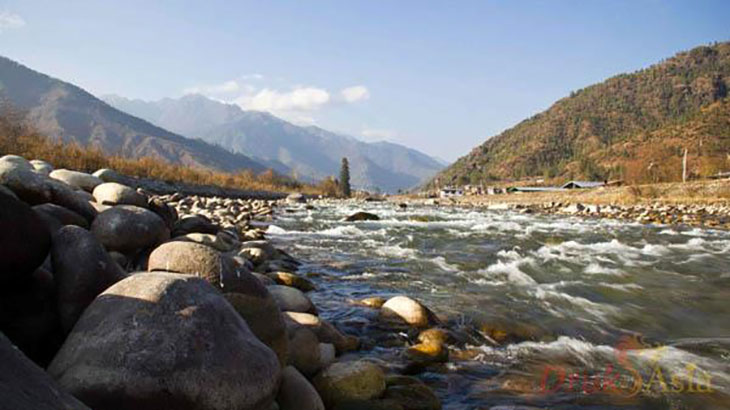Discover the breathtaking beauty of Bhutan, the Land of the Thunder Dragon, and home to Buddhist monasteries in a 10-day tour of this Himalayan kingdom.
Itinerary
Day 1: Arrival in Paro, Bhutan
Welcome to Bhutan and your first day in the magical Land of the Thunder Dragon! Upon arrival at Paro International Airport, just outside the arrival hall, you will be greeted by one of our guides. At more than 7,300 feet above sea level, you will need to acclimate to the high altitude. So, we will take it easy with a short drive to your hotel, enjoy a Bhutanese lunch, and then visit a few sights around the capital city of Thimphu.
We start our tour at Motithang Takin Preserve, home to Bhutan’s national animal, the takin. This unusual animal is often described as looking like a moose that was stung by a bee. Formerly a small zoo, the king decreed that penning up animals was contrary to Buddhist beliefs, so they were released. The takin had difficulty adapting, so the preserve was established to care for these gentle creatures.
We will then drive up to Buddha View Point where the Buddha Dordenma statue sits. At 169 feet tall, this bronze statue can be seen from just about anywhere in Thimphu. One of the largest statues in the world depicting a seated Buddha, it is the perfect place to enjoy stunning, panoramic views of the city.
Hotels:
 Jumolhari Hotel |
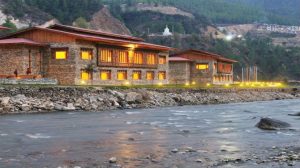 Terma Linca Resort |
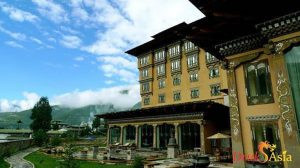 Taj Tashi Thimphu |
Day 2: Tour of Thimphu
Centenary Farmers’ Market is where most of the locals gather on the banks of the river every weekend. Villagers from the nearby valley come here to sell agricultural products and handmade crafts.
Today we visit the National Folk Heritage Museum, dedicated to connecting Bhutan to its past with exhibitions, demonstrations, and artifacts. Designed to resemble a rural home, this 19th-century building houses three stories of art, culture, and relics.
At The National Textile Museum, you will witness the art of weaving and learn about the significance of textile design. Bhutanese weaving is considered a living art form and traditional weaving methods are preserved by the Royal Government.
The National Memorial Chorten was built in 1974 to honor the late King Jigme Dorji Wangchuck. A chorten is a hemispherical shaped memorial stupa. Known as the most visible religious landmark in Bhutan, it is used as a place of meditation.
At Jungshi Handmade Paper Factory, you will witness the art of papermaking. Craftsmen demonstrate how Deh-sho paper is made using the bark of two local tree species. Buddhist monks use Deh-sho to write prayers and for woodblock printing.
Outside Thimphu is Simtokha Dzong, the oldest fortress in Bhutan. Legend says it was built to imprison a demon that was terrorizing the area. The first fortress of its kind, it features beautiful Buddhist paintings and carvings.
Thimphu Tashichho Dzong, a traditional fortress and Buddhist Monastery, is the largest in the city. Featuring distinctive Bhutanese architecture, using neither nails nor written plans, the structure serves as the current seat of the King of Bhutan.
Hotels:
 Jumolhari Hotel |
 Terma Linca Resort |
 Taj Tashi Thimphu |
Day 3: Thimphu to Punakha
On our way to Punakha, the former capital of Bhutan, we will stop at Dochula Pass. Providing stunning 360-degree views of the Himalayan Mountains, it is also the location of the 108 Druk Wangyal Chortens. Ashi Dorji Wangmo Wangchuck, the present Queen Mother of Bhutan, built the memorial to commemorate Bhutan’s victory over Indian militants and to liberate the souls of those who died.
Sitting at the fork of two rivers, Punakha Dzong is considered one of the most beautiful spots in Bhutan. With spectacular displays of Bhutanese architecture, it stands like a medieval city surrounded by lavender Jacaranda trees. Built in 1637, the six-story structure is the second oldest and second largest dzong in Bhutan. It still serves as the winter home of the Je Khenpo, Chief Abbott of the clergy. In 2011, it hosted the royal wedding of King Jigme Khesar Namgyel Wangchuck and Queen Jetsun Pema.
Khamsum Yulley Namgyal Chorten is a one-of-a-kind example of Bhutanese art and architecture, built by the third Queen Mother, Ashi Tshering Yangdon Wangchuck. This beautifully designed chorten took nine years to build, using only religious scriptures to construct the four-story temple. Accessible only by foot, the one-hour walk crosses over a suspended footbridge that is adorned with colorful prayer flags.
Hotels:
 Meri Puensum |
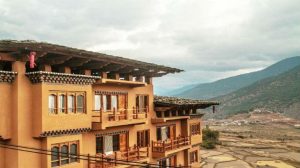 Hotel Lobesa |
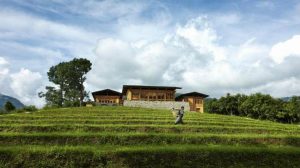 Uma Punakha |
Day 4: Punakha to Bumthang
Bumthang Valley is known as the heartland of Buddhism in Bhutan. In 746 AD, it is said that Guru Rinpoche arrived here to exorcise a demon from the king and then converted the people to Buddhism, restoring peace to the region. Guru Rinpoche stayed in the valley to build more than 40 temples.
In the morning, we hike to Tamzhing Goemba. Built in 1501, it is an important monastery because of its direct connection to the Buddhist saint, Pema Lingpa. We will then visit the sacred monastery Kurjey Lhakhang, which houses a rock that shows Guru Rinpoche’s body imprint after he subdued the powerful Shelging Karpo demon.
According to legend, a giant demoness was preventing the spread of Buddhism by laying her body across Tibet and Bhutan. In 659 AD, King Sontsen Gambo built 108 temples in one day, pinning her to the earth. Jambay Lhakhang is one of the two temples built in Bhutan that day, and every October it hosts a colorful festival to celebrate.
Jakar Dzong was founded in 1549 by the great grandfather of Zhabdrung Ngawang Namgyal, the father and unifier of medieval Bhutan. Known as the Castle of the White Bird, it was built on top of the hill because the lamas were directed there by a large white bird.
In the afternoon, we will take an easy hike to the Thangbi Lhakhang. Situated in the picturesque Thangbi Valley, it is only accessible by foot and across a suspension bridge.
Hotels:
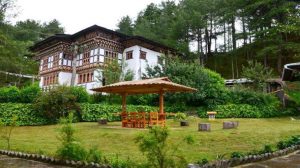 Rinchen Ling Resort |
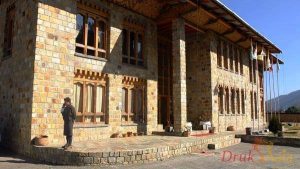 Wangdichholing Resort |
 Peling Hotel |
Day 5: Bumthang
Bumthang Valley is known as the heartland of Buddhism in Bhutan. In 746 AD, it is said that Guru Rinpoche arrived here to exorcise a demon from the king and then converted the people to Buddhism, restoring peace to the region. Guru Rinpoche stayed in the valley to build more than 40 temples.
In the morning, we hike to Tamzhing Goemba. Built in 1501, it is an important monastery because of its direct connection to the Buddhist saint, Pema Lingpa. We will then visit the sacred monastery Kurjey Lhakhang, which houses a rock that shows Guru Rinpoche’s body imprint after he subdued the powerful Shelging Karpo demon.
According to legend, a giant demoness was preventing the spread of Buddhism by laying her body across Tibet and Bhutan. In 659 AD, King Sontsen Gambo built 108 temples in one day, pinning her to the earth. Jambay Lhakhang is one of the two temples built in Bhutan that day, and every October it hosts a colorful festival to celebrate.
Jakar Dzong was founded in 1549 by the great grandfather of Zhabdrung Ngawang Namgyal, the father and unifier of medieval Bhutan. Known as the Castle of the White Bird, it was built on top of the hill because the lamas were directed there by a large white bird.
In the afternoon, we will take an easy hike to the Thangbi Lhakhang. Situated in the picturesque Thangbi Valley, it is only accessible by foot and across a suspension bridge.
Hotels:
 Rinchen Ling Resort |
 Wangdichholing Resort |
 Peling Hotel |
Day 6: Bumthang to Gangtey
On our way to Gangtey, we will pass through Trongsa, the ancestral home of the Wangchuck monarchy. Meaning new town, the first temple was built here in 1543. Traditionally, each king of Bhutan has held the position of Trongsa Penlop (governor) before wearing the Raven Crown.
Trongsa Dzong was built in 1644 and controlled by the Wangchuck dynasty until they became the rulers of Bhutan in 1907. Occupying the only road that connected eastern and western Bhutan, all trade was controlled by this dzong. Flourishing under the command of Zhabdrung Ngawang Namgyal, this massive structure with its high walls could shut down all trade between the east and west by closing its doors.
Up the mountain sits the Taa Dzong, a watchtower built in 1652 to ward off attacks of the town below. It now serves as home to the Royal Heritage Museum, highlighting the history of the area and the Wangchuck dynasty. Featuring Buddhist art, royal memorabilia, a 500-year-old jacket of Ngagi Wangchuck, and Padma Kathang’s personal copy of the handwritten biography of Guru Rinpoche. You can read more about the history and importance of the Taa Dzong in the book, Tower of Trongsa by Christian Schicklgruber.
Hotels:
 Homestay |
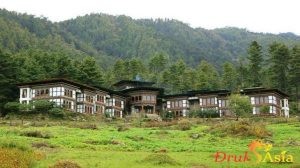 Dewachen |
Day 7: Gangtey
Today we travel to Phobjikha (Gangtey) Valley. Known as the winter home of the black-necked cranes (Grus nigricollis), you can see 600 of these elegant, shy birds that migrate here from Tibet between November and March. This bowl-shaped valley is also a wildlife preserve, so you might also see the other native animals to Bhutan, including muntjac, sambar, serow, or yak.
Gangtey Goemba is a 17th-century monastery that sits on a hill, overlooking the entire valley. An excellent example of Tibetan architecture, the prayer hall (tshokhang), features eight great pillars. In the 15th-century, the Buddhist saint Pema Lingpa foretold that a temple would be built there, so his teachings could be spread. In 1613, his grandson, and reincarnation of Pema Lingpa, fulfilled the prophecy by building a Nyingma temple at the location. Kuenzang Chholing, the long white building nearby, is where monks go to meditate for three years, three months, and three days.
While visiting Gantey Valley, you can stay in the hotel or room with a local family in a modest farmhouse. This unique opportunity will allow you to get to know a Bhutanese family more closely by interacting with them on a personal level.
Hotels:
 Homestay |
 Dewachen |
Day 8: Gangtey to Paro
We head back to scenic Paro Valley, home to many of Bhutan’s oldest monasteries and the country’s only airport. This mixture of old and new makes Paro an important part of Bhutan’s past, present, and future.
The valley is home to Chomolhari (Jomolhari) Mountain, located on the northwestern border of Bhutan and Tibet. Often called the wife of Kangchenjunga, the world’s third highest mountain, Chomolhari is Bhutan’s third tallest mountain at 24,035 feet. The glacier waters flowing from the mountain feed the rivers of the Paro Valley.
Paro (Rinpung) Dzong means Fortress on Jewels because it was built using stones rather than clay. It is an excellent example of 15th-century architecture and one of the most impressive dzong in Bhutan. It currently serves as the government center of Paro. A cantilever bridge that crossed the river was damaged by fire in 1907 and later washed away by floods, so the original construction was lost.
Located on a hill above Para Dzong is Ta Dzong. This cylindrical watchtower was built in 1649 and converted into the National Museum of Bhutan in 1968. The spiral-shaped building holds antiques, art, textiles, weapons, and household items that tell the history of Bhutan.
Hotels:
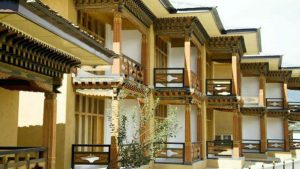 Tenzinling Resort |
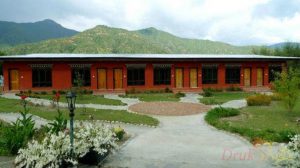 Metta Resort & Spa |
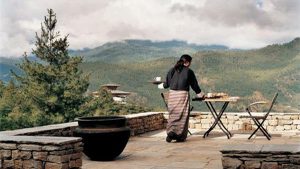 Uma Paro |
Day 9: Paro
We will take a two-hour hike to Taktsang Monastery, arguably one of the most photographed monasteries in Bhutan. Accessible only by foot, this sacred site was built precariously on the cliff’s edge, more than 10,000 feet above sea level. This is where Guru (Rinpoche) Padmasambhava, the father of Bhutan Buddhism, is said to have flown on the back of a tiger to meditate in a cave for three years. An exhilarating climb to the cafeteria is decorated with colorful prayer flags and provides breathtaking views of the Himalayas.
A short drive away is the ruins of Drukgyal Dzong. The great Zhabdrung Ngawang Namgyal built this fortress in 1647 to fight invading Tibetan armies. In 1957, a fire destroyed the dzong, but it was left in ruins as a reminder of Bhutan’s glorious past military victories. On clear days, the snow-capped peak of Chomolohari Mountain can be seen.
We end our tour with a visit to Kyichu Lhakhang, one of the oldest Buddhist temples in Bhutan. This is the second of two temples built in Bhutan by Tibetan King Songtsen Gambo in a single day to hold down the giant demoness who was preventing the spread of Buddhism.
Hotels:
 Tenzinling Resort |
 Metta Resort & Spa |
 Uma Paro |
Day 10: Depart Paro
We bid fond farewell to this beautiful Himalayan country and take an early flight back to Singapore. We hope by now you would have made some friends and also kept many photos and beautiful memories of Bhutan! And we look forward to seeing you again in this beautiful land of endless Enchantments! Tashi Delek!
Group Departures
| Dates Start-End |
Availability Remaining Spaces |
Price Per Person |
Room Type |
| Thu, 16 Jun 2016 – Sat, 25 Jun 2016 | Sold Out | $1840 | Standard Single |
| Thu, 20 Oct 2016 – Sat, 29 Oct 2016 | Sold Out | $2290 | Standard Single |
| Thu, 10 Nov 2016 – Sat, 19 Nov 2016 | 7+ | $2290 | Standard Twin |
More than 90% of our travellers choose this option.
Frequently Asked Questions
I’m planning to travel alone without joining another group, is that possible?
Yes. Most of our guests are traveling in private group of 1 to dozens.
I would like to do an overnight camp or trekking, can that be incorporated?
Yes. We will be able to add a short or longer trek depending on your preference. It may require you to extend your stay or skip certain towns. You can also extend your stay to add a trek without missing any points of interest
I would like to one night of camping and a short hike.
We can arrange that in Paro. You may opt to do an overnight camping before Tiger Nest.
What’s Included
» Private guided tour
» Visas for Bhutan
» Airport transfers
» Daily 3 meals (B/L/D) at designated restaurants or hotels
» Accommodation at 3 star hotel
» A qualified & licensed English-speaking guide
» An experienced driver
» A tour vehicle
» Entry fees & road permits
» Government fee, royalty, taxes & surcharges
» Mineral bottled water
» Set of traditional costume (to be return at the end of your stay)
» Full service & assistance before, during and after your Bhutan trip
Suitable Months
Whole year round
High Season: March-May and September-November
Low Season: December-February and June-August
Prices
For Travel during the months of: Dec-Feb and Jun-Aug
USD 2,209 for 1 person traveler
USD 2,119 per person for 2 person travelers
USD 1,849 per person for group with 3 or more
For Travel during the months of: Mar-May and Sep-Nov
USD 2,659 for 1 person traveler
USD 2,569 per person for 2 person travelers
USD 2,299 per person for group of 3 and above
What’s Excluded
» Flight into Bhutan via Drukair (can be arranged with us)
» Flight on other airline to catch Drukair Flight
» Hotel stay outside of Bhutan
» Travel Insurance (can be arranged with us)
» Meals at 4-5 stars restaurants
» Tips for the guide and driver
» Alcoholic drink
» Expenditure of personal nature
Our Guarantee
Guaranteed Visa approval. We have yet to disappoint a single of our travellers in term of Visa issuance.
Your choice of hotels will be confirmed for your inspection before your arrival. We only book you on hotels which we love and would love again.
We will be happy to change your guide, driver or vehicle on the first two days of arrival in Thimphu if you are not satisfied with our selection. Drop us a note and our hospitality team be on the spot to assist you.
We’re here to help. Our world-class member services team is available by phone or email — there’s no automated system or call center; you’ll communicate with a real person.

